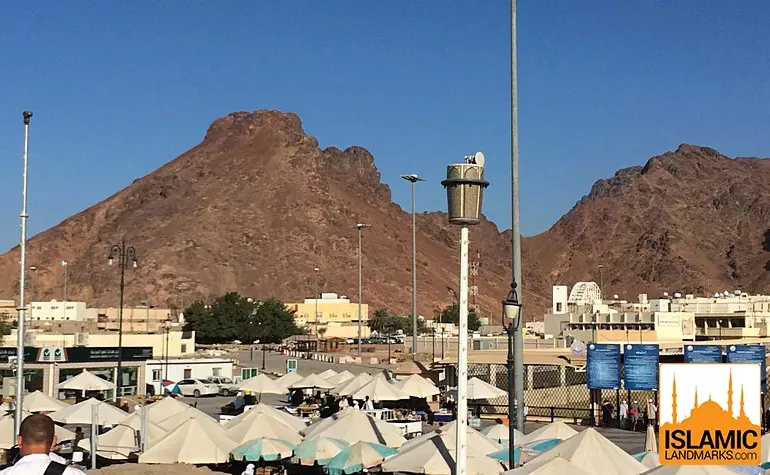
Exploring the Battle of Uhud and its Lessons During Umrah
The Historical Context of the Battle of Uhud
Every Muslim dreams of the sacred journey of Umrah. When you travel to Umrah, you don’t just experience spiritual cleansing through Tawaf, Sa’i, and prayers; you also step into a land where history comes alive. Makkah and Madinah are cities where the greatest events in Islamic history took place—events that shaped the destiny of the Ummah.
One such profound event is the Battle of Uhud. Located just outside Madinah, the site of Uhud remains a powerful symbol of courage, sacrifice, and divine lessons. For pilgrims, visiting Uhud during Umrah is not just a sightseeing activity but a spiritual reflection that adds depth to their pilgrimage.
In this comprehensive guide, we’ll explore the historical background of Uhud, the lessons it teaches us today, how ziyarat to Uhud during Umrah strengthens faith, and how Umrah packages in different months shape this experience.
Why Did the Battle Happen?
The Battle of Uhud occurred in 3 AH (625 CE), a year after the Muslims’ victory at Badr. The Quraysh of Makkah, furious over their humiliating defeat at Badr, prepared a large army of 3,000 men, including 200 cavalry and 700 armored soldiers. Their goal was to destroy the Muslim community in Madinah.
Prophet Muhammad ﷺ, with 700 believers, prepared for defense. Despite being outnumbered, the Prophet ﷺ showed remarkable strategic thinking by placing archers on a small hill to block the Quraysh cavalry.
The Turning Point
At first, Muslims gained victory, and Quraysh began retreating. However, the archers disobeyed the Prophet’s ﷺ instruction and left their positions to collect spoils of war. Khalid ibn al-Walid, then still a non-Muslim, seized the opportunity to launch a surprise cavalry attack from behind. The Muslims were trapped, and chaos ensued.
The Aftermath
- 70 companions were martyred, including Hamza ibn Abdul Muttalib (RA).
- The Prophet ﷺ was injured; his helmet broke into his face.
- Despite the losses, Allah revealed verses in Surah Aal-e-Imran (3:139):
“So do not weaken and do not grieve, and you will be superior if you are true believers.”
Thus, Uhud was not a defeat but a divine test of obedience, patience, and perseverance.
Lessons from the Battle of Uhud for Today
The Battle of Uhud is more than history; it’s a blueprint of life lessons for Muslims everywhere. When pilgrims visit Uhud during Umrah, these lessons become alive and personal.
- Obedience to the Prophet ﷺ
The disobedience of a few archers changed the fate of the battle. This teaches us to always prioritize the commands of Allah and His Messenger ﷺ. During Umrah, following guidelines and performing rituals as taught by the Prophet ﷺ ensures acceptance of our worship.
- Patience in Trials
The Muslims’ suffering at Uhud shows that even the best of people are tested. Similarly, when you travel to Umrah, difficulties like long flights, waiting in lines, or heat are minor compared to the trials of the companions. Patience during Umrah reflects the spirit of Uhud.
- Unity of the Ummah
When united, the Muslims were strong; when divided, they faltered. This mirrors the importance of staying united as families and groups in Umrah packages, especially during crowded months like Ramadan.
- Sacrifice for Islam
The martyrdom of Hamza (RA) teaches us that Islam was built on sacrifice. Visiting his grave during Umrah inspires pilgrims to give up bad habits, ego, and worldly attachments.
- Leadership and Wisdom
The Prophet ﷺ displayed remarkable calmness despite injury. This is a reminder that leadership in crisis requires wisdom, patience, and reliance on Allah.
Visiting Uhud During Umrah – A Spiritual Experience
What Pilgrims See
When you visit Uhud during your Umrah package ziyarat in Madinah, you stand at the base of Mount Uhud, a site filled with emotion. The air itself feels heavy with history. Pilgrims usually:
- Visit the graveyard of Shuhada-e-Uhud, where 70 martyrs rest.
- Stand before the grave of Hamza (RA), making heartfelt dua.
- Visualize the battlefield, imagining the bravery of companions.
- Hear the narration of guides who explain every detail.
Emotional Reflections
- Many pilgrims cry while remembering Hamza (RA).
- Families explain the sacrifices to their children, making Umrah an educational journey.
- The site inspires humility and gratitude for the freedom Muslims enjoy today.
Travel to Umrah Packages and Ziyarat to Uhud
When booking with Travel to Umrah, you can choose packages that include detailed ziyarat tours of Madinah, ensuring Uhud is part of your trip.
Package Options:
- 3-Star Umrah Packages – Affordable and usually include a group ziyarat of Uhud.
- 4-Star Packages – Balanced comfort with guided historical explanations.
- 5-Star Luxury Packages – Longer stays in Madinah, allowing extended visits to Uhud and other sites.
Choosing the right package ensures you maximize both spiritual rituals and historical exploration.
The Battle of Uhud Across Different Months of Umrah
Performing Umrah in different months influences your ziyarat experience at Uhud.
Ramadan Umrah
Duas at Uhud during Ramadan, especially near Laylat-ul-Qadr, feel powerful. Sacrifice and devotion mirror the fasting spirit.
December Umrah Packages
Families often travel in December due to holidays. Visiting Uhud in cooler weather makes the journey comfortable for elderly pilgrims.
Easter Umrah Packages
Perfect for families and students; parents can use Uhud ziyarat as a teaching opportunity for children.
Summer Umrah Packages
Though hot, reflecting on the hardships faced by the companions at Uhud inspires resilience.
Off-Peak Umrah Packages
Traveling in Muharram, Safar, or Rajab means fewer crowds, giving pilgrims more time to sit, reflect, and pray at Uhud in peace.
Qur’anic Verses and Hadith on Uhud
Allah mentions Uhud directly in the Qur’an, highlighting its lessons:
- Surah Aal-e-Imran (3:121–122): Allah describes how the Prophet ﷺ set out early to assign positions to the believers.
- Surah Aal-e-Imran (3:140):
“If a wound has touched you, be sure a similar wound has touched the opposing people. Such days (of victory and defeat) We alternate among the people…”
Hadith also emphasize Uhud’s significance:
- The Prophet ﷺ said:
“Uhud is a mountain that loves us, and we love it.” (Sahih al-Bukhari)
This elevates Uhud from just a battlefield to a sacred landmark beloved by the Prophet ﷺ himself.
Practical Tips for Visiting Uhud During Umrah
- Confirm with Your Travel Agency – Ensure Uhud is part of the ziyarat tour in your Umrah package.
- Best Time of Day – Visit early morning or after Asr to avoid extreme heat.
- Dress Modestly – This is a site of martyrs; maintain dignity.
- Make Dua – For the martyrs, for unity of the Ummah, and for steadfastness in your own life.
- Bring Children – Teach them history through firsthand experience.
Continuing the Lessons of Uhud After Returning from Umrah
The journey doesn’t end once you leave Madinah. Just as the Prophet ﷺ reminded Muslims after Uhud, life is a constant test. Pilgrims who visit Uhud during Umrah often carry home lifelong lessons:
- Patience in hardships like illness or financial struggles.
- Unity in families and communities, remembering disunity caused setbacks at Uhud.
- Sacrifice for deen, through charity, prayer, and service.
Revisiting these lessons after Umrah keeps the spiritual flame alive.
Conclusion
The Battle of Uhud is more than a historical event—it is a mirror for our lives. When pilgrims travel to Umrah, visiting Uhud transforms their journey into a complete package of spirituality and history.
Whether you book Ramadan Umrah packages, December Umrah packages, or off-peak Umrah packages, ensure your ziyarat includes Uhud. Each month of Umrah brings a different flavor of reflection: sacrifice in Ramadan, family bonding in December, calm reflection in off-peak months.
The battle of Uhud teaches timeless lessons: obedience, unity, patience, and sacrifice. As you stand at the site during Umrah, you realize that these lessons are not just for the past—they are for every believer, every family, and every generation.






